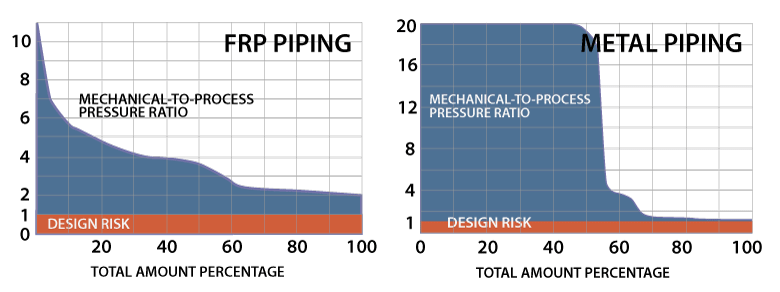
Through years of experience I came to some observations working in most situations. Two of them concern the psychology of project bidding.
Concise, well-written, detailed and superb quality project offer is critical in building a sense of trust to a contractor: it may be easily "converted" into extra 8-12% increase in the project price.
If the client has a number of offers, it is human to start from over-performing offer than from under-performing one. The most elaborate and best-presented offer will form the client biases and preferences and eventually be used as a basis for comparison.
First impression bias works even when differences in the project costs are well above 20%. In such cases the engineer starts from the best quality offer to learn and understand what makes the difference. This winning pattern worked in all projects I participated.
To make sensitive quality leap in small-size project offer is hard. Such projects leave no place for customization as they request standardized containerized designs assembled from the same equipment pieces and replicated multiple times.
Megaprojects are all custom-designed, their offer quality is a function of time, resources, experience, and digital alacrity.
Below is a brief overview of 14 points that make your mega-project offer (PO) stand out of the crowd. Nearly each has time (T) and costs implications ($).
1. PO writing style
In the age of the connected customer inundated with information, speed-clarity balance may seem unreachable goal for PO unless you move all the supporting information to the web. It may be the manufacturer's drawings, infographics explaining general principles, the project team resumes or LinkedIn profiles, etc.
Every piece of information added to PO shall target the project scope or requested warranty. Magic numbers irritate customers. Instead of giving ball-park experience, cost and construction time, break them down according to the plant subsystems. Do not make promises and assumptions in our Digital Age, give metrics and options instead.
2. One-page executive summary
The executive summary shall give general overview of the project, your priorities and describes the general data, production and short technical specification. GS Imina site contains excellent executive summaries. Crenger offers auto-generated samples too.
3. Engineering design and testing standards & practices (T)

Plant design and its acceptance are governed by Cascading Standards Principle. It defines the priority of the standards and practices "activation". The project standards and requirements defined by the client have always the highest priority. Then come the corporate standards and guidelines. They absorb the company know-how and long-lasting experience. Only parts that are not overridden are added to the projects standards. The same rule applies to the local and international standards. Finally what is cascaded down below the international standards shall be "caught" by the industry practices.
I do not remember any project where the cascading standards principle had been ever explained to the client. Corporate standards are never referenced in PO, so your list will definitely tip the scale in your favor.
4. Graphics & documentation standards ($)
This point has been never raised in any PO I participated. Is this really a problem? In my last SWRO desalination project of 160 MLD moving to the client documentation standards caused a year delay (!) in the P&IDs submission. The best answer is to list all the documents and offer a web link to the samples library. Thus you may avoid high costs of plugging into the client system of the documentation standards, processing and control.
5. Material-fluid compatibility ($)
Materials corrosion is still a huge problem today in desalination plants: in hot climate even super-duplex steels corrode unacceptably fast. Material-fluid compatibility matrices for pumps, valves and piping make your offer shine as no contractor does this today. It should be accompanied by material-fluid-velocity matrix. Some examples are given here.
6. Mechanical design conditions ($$)
It is not a joke, but no bid offer ever mentioned the conditions for the plant mechanical design. They form some hypothetical case limiting from above the variety of the performance design and off-design points to be observed during normal operation, some equipment failure or planned maintenance over the time of the year. This hypothetical case shall address minimum water temperature, maximum water salinity, maximum RO membrane fouling, maximum plant production and requested availability of the plant. Omission of the mechanical design philosophy is a best excuse to disqualify the bidder.
How to demonstrate the mechanical robustness of the plant in a unique way? Use metrics. These graphs are self-explanatory.

Eventually, this paragraph may turn into most convincing reason why your bid is more expensive than your competition.
7. Feed quality fluctuation and plant design ($$$)
Short-term fluctuations in the seawater quality (characterized by NTU and TSS) may be substantially beyond the economically-justified operation range selected by the bidder. In most cases extending the operation range to cover low-quality flares requires different and more costly pretreatment technology. The trade-off reasoning shall be explained to the client and how the plant shall be operated during these periods.
8. Plant Design Reliability ($$$)
Reliability (and availability) is an expensive product: each extra 1% roughly adds 1% to the project costs. Unavailability is normally 5 – 8% for a plant designed without reliability in mind. This figure is explicitly set to 2 - 3% in most tenders. So what are the options to bridge the gap without paying much?
The reliability of the desalinated water production shall be treated differently from the reliability of the product chemistry maintenance: the product consumers are always tolerable to the temporary offsets from the product time-averaged quality criteria.
For example, the post-treatment LSI-controlled system with the quality reliability of only 90% may be an acceptable solution. This figure will bring 30 - 50% (!) drop in the installation costs of the lime milk dosing system as compared to the system with the 98% reliability.
Structural reliability requirements shall be relaxed for the subsystems (like Boron removal) with the average annual load substantially less than the installed capacity. By the same token, auxiliary systems like CIP and chlorination (for intake and posttreatment systems) with the installed capacity usage less than 100 hours annually shall not contain any reserved capacities.
9. Spare Parts and Items Stock ($$$)
Spare parts and Items stock shall be viewed as a critical extension of the plant design and budget; they add 4 - 8% to the procured equipment costs.
Spare parts list refers to equipment items that are planned for repair on site. On the contrary spare items list aims at the item replacement as faster and/or more economical alternative. The former is compiled by the equipment and instrument vendors, while the latter is a direct responsibility of the plant designer, without its identification the plant design is not considered complete.
Adding to your offer the detailed list of spare parts and items (as a result of the plant availability analysis) will surely strengthen it and seal the project scope.
10. Control design ($,T)
In a nutshell, the plant control design is all about the startup and shutdown sequences for high pressure feed pumps. The latter shall guarantee (!) the feed pressure variation not more than 0.7 Bar/sec during transients not to lose the mechanical guarantee of the membrane manufacturers. These points clearly explained to the client, add value to your bid. Especially if the plant is planned to use for power peaks shaving or its operation is tied to the electricity tariffs or if the plant is powered by solar energy.
Your next strong point is safety control. Desalination is a chain of processes; each being represented by a cluster of subsystems. How sensitive this design to a subsystem failure? Does the plant fail safe? Does the design block the failure propagation upstream (domino principle)? Is shutdown is smart or brutal? Is UPS in the scope of supply?
Remember, metrics always impresses. Instead of rambling about your control details, give the safety interlocks count and control loops one.
11. Subsystems integration quality ($$)
Integrity quality describes how good the subsystems forming the plant, match each other. Subsystems compatibility is characterized by a turn-down ratio, operating reserve capacity, standby capacity and automation level. If at least one subsystem in a chain of 20 others is manually operated, the plant does not match "full automation" criterion. The same is applied to the equipment selection. The variable speed drive is considered oversized relative to the nominal size of the motor, not its actual load.
Are all subsystems engineered and manufactured by the project contractor? If not, the list of vendor-provided pre-engineered systems will strengthen your offer substantially.
12. Work safety
The following design flaw - the SWRO membrane ends overlooking frequently visited maintenance area - which I saw in many installations, may cut the bidders queue in half before any costs comparison.

Regardless of whether the tender limits noise pollution inside the shop and on the plant boundary, always add the noise pollution map to your offer to be ahead of your competition.
13. Inspections, tests and checks (TT, $)
Inspections and tests quantity make big impact on the project schedule and increase the equipment cost by 5 - 10%. To avoid any scope creep, the inspection and tests quantities categorized by the equipment type shall be included in the offer. This practice is standardized in the power generation projects.
14. Documentation submittals scope (T, $$)
The growing share of the PPP projects, collaboration and outsourcing accelerate the tendency to setting a clearly defined interface between engineering producing digital data and capital construction.
This interface reshapes the project execution because the scope of the project engineering is now defined by the documentation handover.
The handover includes specifications and datasheets, MRBs, compliance certificates, construction and inspection certificates, operations and maintenance manuals, as-built documentation, spare parts and items projections and many others.
The project offer shall contain the full list of the submittals with the date of submission. Dates form the basis for the staged payments.
